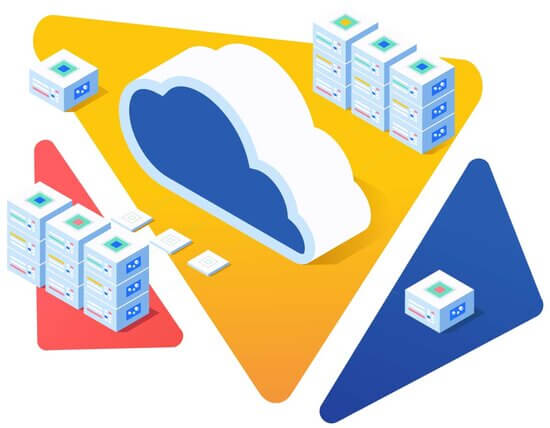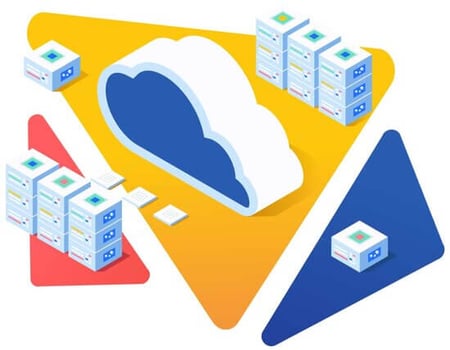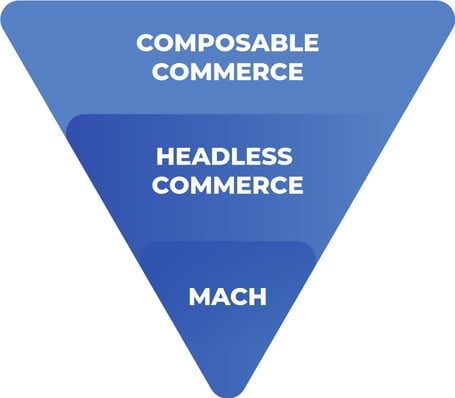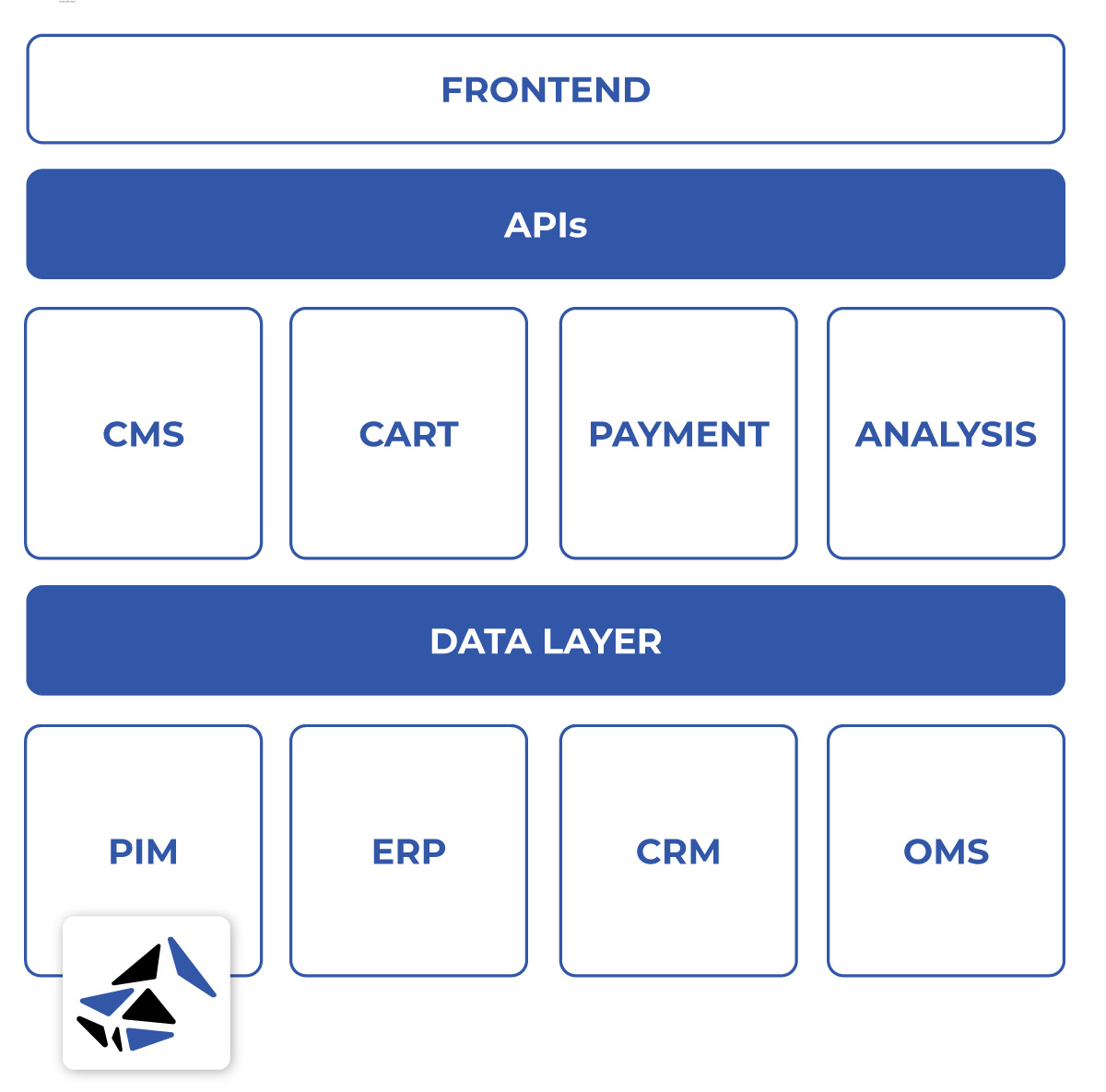COMPOSABLE COMMERCE
Maximum freedom in building your technology stack

With the Composable Commerce approach, you can build a future-proof and cost-effective e-commerce stack. Discover how it enables you to freely add or remove software components based on your business strategy and product data syndication needs.
Schedule a 30 minutes meeting with a PIM specialist

Benefits for the whole company
Business Management
Make your e-commerce more agile, scalable, and competitive. Let technology adapt to your business strategy, not the other way around.
IT Management
Say no to vendor lock-ins. Be free to choose any software you need and create a best-of-breed solution for your company.
Marketing & Sales
Create exciting product experiences easier and faster. Maximize data synchronization, connect more efficiently with sales channels.
Jump to the part you are interested in:
- What is Composable Commerce?
- Packaged Business Capabilities
- Composable Commerce in simple terms
- The tenets of Composable Commerce
- Composable Commerce vs Traditional Commerce
- Composable Commerce vs Headless Commerce
- Composable Commerce vs MACH Architecture
- The Benefits of Composable Commerce
- The Drawbacks of Composable Commerce
- What to Check When Developing Composable Enterprise?
- Should Your Business Switch to Composable Commerce?
- Bluestone PIM & Composable Commerce
What is Composable Commerce?
Composable Commerce is a modular approach that allows companies to customize their technology stacks by selecting best-of-breed solutions to respond to complex business requirements. Each solution can be assembled for a specific business need as Packaged Business Capabilities (PBCs).
The two terms "Composable Commerce" and "PBCs" were coined by Gartner Research in their paper published in 2020.
Packaged Business Capabilities
Packaged Business Capabilities (PBCs) are software components that serve defined business capabilities.
✔ PCBs can consist of a data schema, APIs, and a set of services. In practice, in a form accessible to an end-user, PBC can be a shopping cart, a new channel, or a payment option. PBCs are scalable and can be developed independently.
✔ Packaged Business Capabilities fit perfectly with the modular architecture of Composable Commerce. This architecture allows business teams to participate in the design and delivery of new experiences. The Composable Commerce strategy based on PBCs helps create more user-friendly business solutions.
Let's say your retail business is preparing for the increased traffic during the Black Friday / Cyber Monday peak.
Work on the scalability of the e-commerce platform is progressing slowly, as your team needs to add hundreds of new items on a regular basis. Testing of the new AR features and syncing with SEO services have been postponed to the next quarter.
The efforts of the company and the vendor are focused on this one crucial process, other plans are pushed aside, but we know what needs to be done.
Developers know that this is just another day in the realm of monolith...
Now imagine that you're not a one-vendor lock-in and can tailor various technologies to your business processes.
The enterprise technology stack is like construction made of Lego blocks, and the enterprise itself is the main architect of it. You can scale quickly because the platform runs in the cloud. You can easily add new payment options without affecting the shopping experience.
That's a small glimpse of what the composable commerce approach is all about.
On his channel, John Williams, CTO at Amplience, explains in an understandable way what is composable commerce. See the video.
Let's say your retail business is preparing for the increased traffic during the Black Friday / Cyber Monday peak.
Work on the scalability of the e-commerce platform is progressing slowly, as your team needs to add hundreds of new items on a regular basis. Testing of the new AR features and syncing with SEO services have been postponed to the next quarter.
The efforts of the company and the vendor are focused on this one crucial process, other plans are pushed aside, but we know what needs to be done.
Developers know that this is just another day in the realm of monolith...
Now imagine that you're not a one-vendor lock-in and can tailor various technologies to your business processes.
The enterprise technology stack is like construction made of Lego blocks, and the enterprise itself is the main architect of it. You can scale quickly because the platform runs in the cloud. You can easily add new payment options without affecting the shopping experience.
That's a small glimpse of what the composable commerce approach is all about.
On his channel, John Williams, CTO at Amplience, explains in an understandable way what is composable commerce. See the video.
MODULAR
In Composable Commerce, the solutions are not tightly coupled. Therefore, they can be deployed independently and are interchangeable over time.
OPEN
Composable Commerce operates within an open ecosystem. The solutions can be easily customized and integrated with other IT components.
FLEXIBLE
The composable architecture allows companies to be more agile and adapt quickly to changing markets, for example, by adding new features or channels to their modern technology stacks.
BUSINESS-CENTRIC
With a composable approach, companies have more opportunities for business innovation and rapid deployments at lower costs.
Monolithic platforms can be a convenient solution, an enterprise has everything in one place, from one vendor. On the other hand, this technology approach has complex scalability and a slower development pace. When a new feature implementation or any change needs to be made in a codebase, developers have to update the entire system, not just a certain part of it.
Composable Commerce architecture based on independent modules is an alternative to the traditional commerce platforms based on monolithic architecture, where different components are combined into a single program.
Monolithic platforms can be a convenient solution, an enterprise has everything in one place, from one vendor. On the other hand, this technology approach has complex scalability and a slower development pace. When a new feature implementation or any change needs to be made in a codebase, developers have to update the entire system, not just a certain part of it.
Composable Commerce architecture based on independent modules is an alternative to the traditional commerce platforms based on monolithic architecture, where different components are combined into a single program.
Headless commerce refers to the decoupling of the front-end design (the layer customers interact with when visiting the online store) from the back-end engine (functionalities).
These two layers work independently and communicate with each other via APIs (Application Programming Interface).
The separation of the front-end and back-end opens up new opportunities to implement various innovations in the shopping experience faster and more smoothly.
The Composable Commerce approach incorporates the methodology of headless commerce but takes it a step further by enabling the separation of back-end services.
Components can communicate with their entire environment (front-end and back-end elements).
Business leaders have full freedom to enrich their commerce solutions and tailor technology to their business requirements.
Headless commerce refers to the decoupling of the front-end design (the layer customers interact with when visiting the online store) from the back-end engine (functionalities).
These two layers work independently and communicate with each other via APIs (Application Programming Interface).
The separation of the front-end and back-end opens up new opportunities to implement various innovations in the shopping experience faster and more smoothly.
The Composable Commerce approach incorporates the methodology of headless commerce but takes it a step further by enabling the separation of back-end services.
Components can communicate with their entire environment (front-end and back-end elements).
Business leaders have full freedom to enrich their commerce solutions and tailor technology to their business requirements.
What is the role of MACH architecture in Composable Commerce?
Similar to headless commerce, MACH is also a part of composable commerce. Basically, the MACH architecture is how the technology stack is delivered in terms of the Composable Commerce approach, which focuses on Packaged Business Capabilities (PBCs).
The MACH architecture facilitates the building of composable commerce with best-of-breed components but is not necessary to use all MACH technology components (Microservices, API-first, Cloud-native, Headless).
Differences between MACH and composable commerce
The MACH architecture is a technical architecture for building systems and software that gives businesses more flexibility in software development. This is possible thanks to a cloud environment and the modularity of APIs and the microservices economy.
Composable commerce is an approach to building and developing commerce experiences. It is based on the combination of Packed Business Capabilities which consist of the elements of the technology stack, user-friendly design, and business logic.

In summary, these are complementary concepts. MACH is one of the technical models to deliver the goals of composable commerce.
Composable Commerce takes businesses to the next level, helping them meet demanding customer expectations and the challenges of rapidly changing markets. Composable Commerce tightly integrates the capabilities of modern technologies with business logic.
Technical Benefits
Business Benefits
✔ Flexibility in building a technology stack
✔ Avoidance of one-vendor lock-in
✔ Faster scalability
✔ Reduction of acquisition costs
✔ Freedom to customize a technical solution to meet specific business requirements
Business Benefits
✔ Deliver seamless customer experience at every touchpoint
✔ Respond quickly to changing business needs and trends
✔ Outpace competition
✔ Future-proof business and commerce stack
✔ Deliver innovative experiences for e-commerce platforms
Technical Benefits
✔ Flexibility in building a technology stack
✔ Avoidance of one-vendor lock-in
✔ Faster scalability
✔ Reduction of acquisition costs
✔ Freedom to customize a technical solution to meet specific business requirements
✔ Deliver seamless customer experience at all touchpoints
✔ Respond quickly to changing business needs and trends
✔ Outpace competition
✔ Future-proof business and commerce stack
✔ Deliver innovative experiences on e-commerce platforms
Do you have questions about Composable Commerce and PIM?
Connect with our expert to discuss your specific needs
In the beginning, the freedom and flexibility that composable commerce offers can be overwhelming for internal development teams. Composable Commerce is still an innovative approach, so companies that have chosen to implement it may struggle with the fear of the unknown.
Compared to an all-in-one monolithic architecture, the challenge of operating a composable commerce architecture may be to assemble a technology stack with various best-of-breed components and partner with multiple vendors. The enterprise should be digitally mature and solutions-oriented.
✔ If your company has already implemented MACH technology or headline solutions, you are on the right track to initiating a composable commerce strategy.
✔ If you are still at the beginning of the journey, start with the cornerstone and turn to MACH architecture (for some tips, see our article Getting Started with MACH Architecture). Before starting, you need to prepare the entire organization for digital transformation, care about support, and aim for close collaboration between business and IT departments.
✔ The next crucial thing is mapping your development tools and APIs documentation to prepare for the customization of the tech stack and composing it by adding best-of-breed components.
✔ Developing a composable enterprise is about testing capabilities. Digital transformation from monolith to microservices can be done incrementally based on testing and implementing platform by platform, system by system, and application by application.
✔ If your company has already implemented MACH technology or headline solutions, you are on the right track to initiating a composable commerce strategy.
✔ If you are still at the beginning of the journey, start with the cornerstone and turn to MACH architecture (for some tips, see our article Getting Started with MACH Architecture). Before starting, you need to prepare the entire organization for the digital transformation, care about support, and aim for close collaboration between business and IT departments.
✔ The next crucial thing is mapping your development tools and APIs documentation to prepare for the customization of the tech stack and composing it by adding best-of-breed components.
✔ Developing a composable enterprise is about testing capabilities. Digital transformation from monolith to microservices can be done incrementally based on testing and implementing platform by platform, system by system, and application by application.
Gartner, technological research and consulting firm
Gartner, technological research and consulting firm
In the face of rapidly changing tides of the e-commerce industry, composable commerce is an attractive alternative for modern retailers.
The composable approach offers businesses opportunities to become more agile and future-ready from developing e-commerce platforms to boosting omnichannel strategies and implementing new trends in digital marketing.
Yes, Bluestone PIM is the first product information management software based on the principles of MACH (Microservices, API-first, Cloud-native SaaS, Headless).
Bluestone PIM can be successfully integrated into the composable technology stack alongside best-of-breed solutions like headless content management systems (CMS), digital assets management (DAM), marketplaces, or enterprise resource planning (ERP) systems.
Bluestone PIM is a solution for companies that want to operate their digital commerce platforms in the modern composable commerce model.
To learn more about how MACH-based PIM works, how it can strengthen the e-commerce stack, and the benefits it brings to businesses, read our ebook Bluestone PIM Features Overview 2022.
Yes, Bluestone PIM is the first product information management software based on the principles of MACH (Microservices, API-first, Cloud-native SaaS, Headless).
Bluestone PIM can be successfully integrated into the composable technology stack alongside best-of-breed solutions like headless content management system (CMS), digital assets management (DAM), marketplaces, or enterprise resource planning (ERP) systems.
Bluestone PIM is a solution for companies that want to operate their digital commerce platforms in the modern composable commerce model.
To learn more about how MACH -based PIM works, how it can strengthen the e-commerce stack, and the benefits it brings to businesses, read our ebook Bluestone PIM Features Overview 2022.

Example of a composable commerce stack

